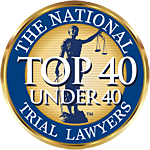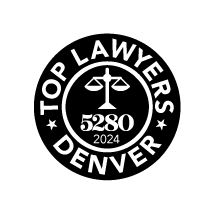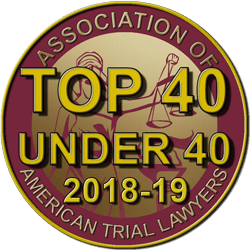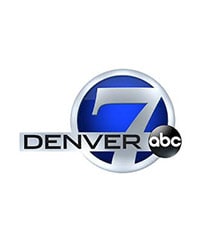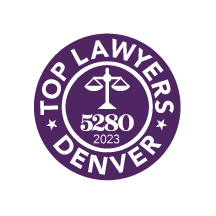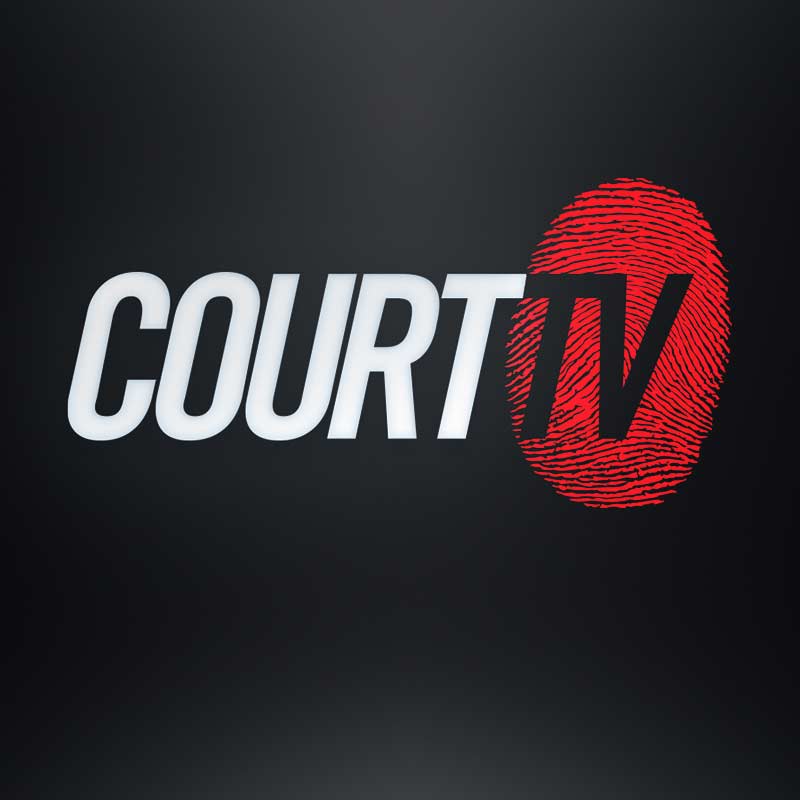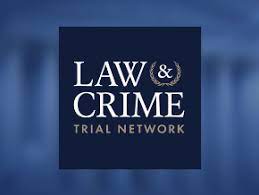Changing lanes is a necessary part of driving, but lane-change car accidents can occur suddenly and cause significant damage and injuries. Whether on I-25, E470, I-70, or a two-lane highway, when such accidents happen in and around Denver, you need to determine fault to resolve legal disputes and pursue compensation for your losses.
Many factors can determine fault in lane-change accidents. It may seem like one driver is at fault for the accident when it’s truly the other driver or a third party. Each driver may try to blame the other, especially if they both tried to change lanes at the same time when the collision happened.
By understanding hiring a well-versed Denver car accident attorney to consider all relevant facts and legal principles of your accident, you can often identify the at-fault driver, navigate the injury claim process more effectively, and protect your rights.
General Principles of Fault
In Denver, fault in a lane-change accident is typically determined using negligence principles. Negligence refers to the failure to exercise reasonable care, leading to harm or injury. In lane-change accidents, determining fault involves evaluating the actions and responsibilities of both drivers involved.
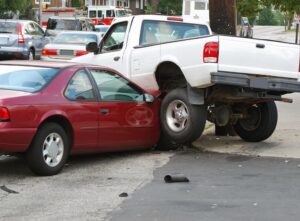
Generally speaking, the driver changing lanes must do so safely and ensure it’s clear and free from other vehicles before making the maneuver. The driver already in the lane has the right of way and expects that other drivers will follow the traffic laws. However, a fault isn’t automatically assigned solely based on the fact that one driver changed lanes.
The Elements of Negligence
In a successful personal injury claim, you or your Denver car accident attorney need to establish the four essential elements of negligence:
- Duty of care/standard of care: You must first prove that the other party had a duty of care towards you or an obligation to exercise reasonable caution and good sense. Proving this duty is often the most straightforward aspect of a claim. Laws, guidelines, and common sense principles establish standards of care.
- Breach of duty: The next step is showing that the other party failed to meet the expected standard of care. For instance, if a speeding driver caused an accident, a reasonably prudent driver should not have violated the law by speeding. Demonstrating the breach of duty establishes the at-fault party’s liability or legal responsibility for the resulting damages.
- Causation: Once your lawyer establishes liability, you must prove a connection between the other party’s actions and your injuries. This connection is known as causation. The law requires the other party’s actions to cause your damages. For example, if a driver who ran a red light hit you, and you suffered a broken pelvis and hip as a result, the driver’s negligence directly caused your injuries and subsequent damages.
- Damages: The final element you must demonstrate is that you have suffered compensable damages due to your injury and the at-fault party’s actions. You need to establish that you experienced actual harm that you can quantify in monetary terms. To prove damages, your Denver car accident attorney can present various types of evidence, such as medical bills for your treatment, pay stubs to validate lost income, and expert testimony regarding the impact of your injuries on your career and ability to perform job duties.
By establishing all four elements—duty of care, breach of duty, causation, and damages—you and your attorney can build a strong case for your personal injury claim, seeking fair compensation for your harm.
Working with a skilled Denver car accident lawyer who can gather and present the necessary evidence is crucial in maximizing the chances of a successful outcome.
Evidence and Witness Testimony
Determining fault in a lane-change accident relies on available evidence and witness testimony.
Gathering as much evidence as possible is crucial, including photographs of the accident scene, vehicle damage, skid marks, and any visible road signs or traffic signals. Eyewitness accounts can provide valuable insight into the sequence of events and help establish fault.
Even if you can not get the contact information for any eyewitnesses at the accident scene, this information may be in the accident report. When you hire a Denver car accident attorney, they will locate witnesses whenever possible and seek their testimony as to how the accident occurred.
Traffic Laws and Rules
In Denver, drivers should follow the traffic laws and regulations governing lane changes.
Colorado law mandates that drivers should:
- Signal their intention to change lanes
- Maintain proper speed
- Ensure a safe distance from other vehicles when changing lanes
Violating these laws may contribute to determining fault in a lane-change accident.
Colorado Laws for Lane Changes
According to CRS §42-4-1007, drivers should stay within a single lane when driving and not depart from it until determining that they can change lanes safely. Additionally, the law states that motorists shouldn’t drive in the center lane when driving on three-lane roads except when passing another car.
CRS §42-4-1003 adds that motorists must pass on the left side of the vehicle they are overtaking and shouldn’t return to the right lane until they have safely overtaken the other vehicle. Under Colorado law, the driver of the overtaken vehicle should yield the right-of-way to the passing car and not increase their speed until the other vehicle passes them.
Video Surveillance and Accident Reconstruction
Video surveillance footage from nearby cameras or dashcams can provide objective evidence of how the accident occurred. Accident reconstruction experts can analyze the scene, vehicle damage, and other relevant factors to determine fault more accurately. These technological and expert resources can be crucial in complex cases where a fault is in dispute.
The good news is that when you hire a seasoned Denver car accident lawyer, they will search for surveillance videos that may show your accident and hire a reputable accident reconstructionist if necessary for your case. With legal representation, you don’t have to worry about doing these things for yourself.
Police Reports and Insurance Investigations
After a lane-change accident, always contact the police to report the incident. The police report can be a valuable document in determining fault, as it provides an objective account of the accident scene, statements from involved parties, and any citations issued.
Remember that the applicable insurance companies may also investigate to determine fault, considering the evidence available and statements from the drivers involved.
Common Damages in a Denver Lane-Change Car Accident
Suffering injuries in a car accident causes additional expenses, physical pain, and many other losses. Damages are the financial representation of these expenses and losses. If you hear that someone received $50,000 in damages, they receive compensation for their losses.
Damages typically fall into two categories, economic and non-economic. They are very different but essential to any personal injury claim.
Economic damages represent your financial expenses and losses, such as:
- Past and future lost income
- Past and future medical bills
- Out-of-pocket expenses such as travel to medical appointments, prescriptions, or medical supplies and equipment
- Legal expenses
Since economic damages are easier to prove with bills, receipts, and income statements, their value is objective.
On the other hand, non-economic damages don’t come with bills, receipts, or statements. Their value is subjective. These damages focus on how your injuries have affected your life and relationships.
They include:
- Pain and suffering
- Loss of enjoyment of life
- Loss of consortium
- Mental anguish
- Scarring and disfigurement
- Emotional trauma
- Loss of a body part or function
A seasoned Denver car accident lawyer can ensure you account for all the damages in your claim. They can also work towards negotiating a fair settlement that will fairly cover your damages.
Causes of Lane-Change Accidents
Lane-change accidents can arise from several different scenarios on the road.
Some factors that contribute to lane change accidents include:
- Failure to signal: Failing to use turn signals is a prevalent cause of lane change accidents. When drivers don’t indicate their intention to change lanes, they catch other motorists off guard, increasing the risk of collisions.
- Blind spots: Inadequate checking of blind spots is another common cause. Suppose a driver fails to properly check their blind spots before changing lanes. In that case, they may not see another vehicle in the adjacent lane, leading to a collision.
- Distracted driving: Distractions, such as using mobile phones, eating, paying attention to pets or passengers, or adjusting the dash controls, divert a driver’s attention from the road. Inattentiveness can result in sudden lane changes without sufficient awareness of surrounding traffic, causing accidents.
- Reckless driving: Aggressive or reckless driving behaviors, such as excessive speeding, tailgating, or weaving in and out of traffic, increase the likelihood of lane change accidents. Drivers who engage in such behaviors may make abrupt lane changes without considering the safety of others.
- Lack of patience and courtesy: Unfortunately, many Denver motorists lack patience and courtesy behind the wheel. Impatience and a disregard for another driver’s right of way can lead to lane change accidents. Drivers who try squeezing into small gaps without proper signaling or giving other motorists sufficient reaction time create hazardous situations.
- Fatigue and drowsiness: Driver fatigue or drowsiness can impair judgment, reaction time, and awareness. Tired drivers may fail to check their blind spots adequately or misjudge the distance and speed of other vehicles, resulting in lane change collisions.
- Intoxication: Driving under the influence of alcohol or drugs significantly increases the risk of lane change accidents. Impaired drivers may exhibit erratic lane changes or fail to maintain proper control of their vehicles, leading to collisions.
- Inadequate mirror usage: Drivers must properly use mirrors when changing lanes. Failing to check mirrors regularly or relying solely on mirrors without turning the head to check blind spots can result in missed information and potential accidents.
- Inexperience: Inexperienced or newly licensed drivers may be more prone to lane change accidents due to limited familiarity with traffic patterns, poor judgment, or insufficient skills in checking blind spots and executing lane changes safely.
- Driving on unfamiliar roads: When drivers don’t know a road, they may not anticipate lane shifts or reductions, increasing the chances of an accident.
- Failure to obey road lines: Road lines have different colors and patterns for a reason. When drivers don’t understand this or ignore what the lines tell them to do, they break the law, and lane-change accidents will occur.
- Poor weather: Adverse weather, such as rain, snow, or fog, reduce visibility and affect road conditions. In such situations, drivers may struggle to see other vehicles or accurately judge their proximity, increasing the likelihood of lane change accidents.
Contact a Denver Car Accident Lawyer Today
Determining fault in a lane-change accident in Denver is often difficult yet essential to maximizing injury compensation. It involves careful analysis of the circumstances, evidence, and applicable laws.
While general negligence principles guide the process, each case is unique and requires a thorough investigation. Seeking legal advice and representation can significantly assist in navigating the complexities of determining fault, ensuring your rights are protected, and maximizing your chances of obtaining fair compensation.
These situations require prompt action, preservation of evidence, and documentation.
An experienced Denver personal injury attorney can protect your rights, gather evidence, negotiate with insurance companies, and build a strong case. They understand the laws and regulations governing lane changes in Denver and can guide the legal process. The sooner you contact one, the sooner they can begin advocating for you.




